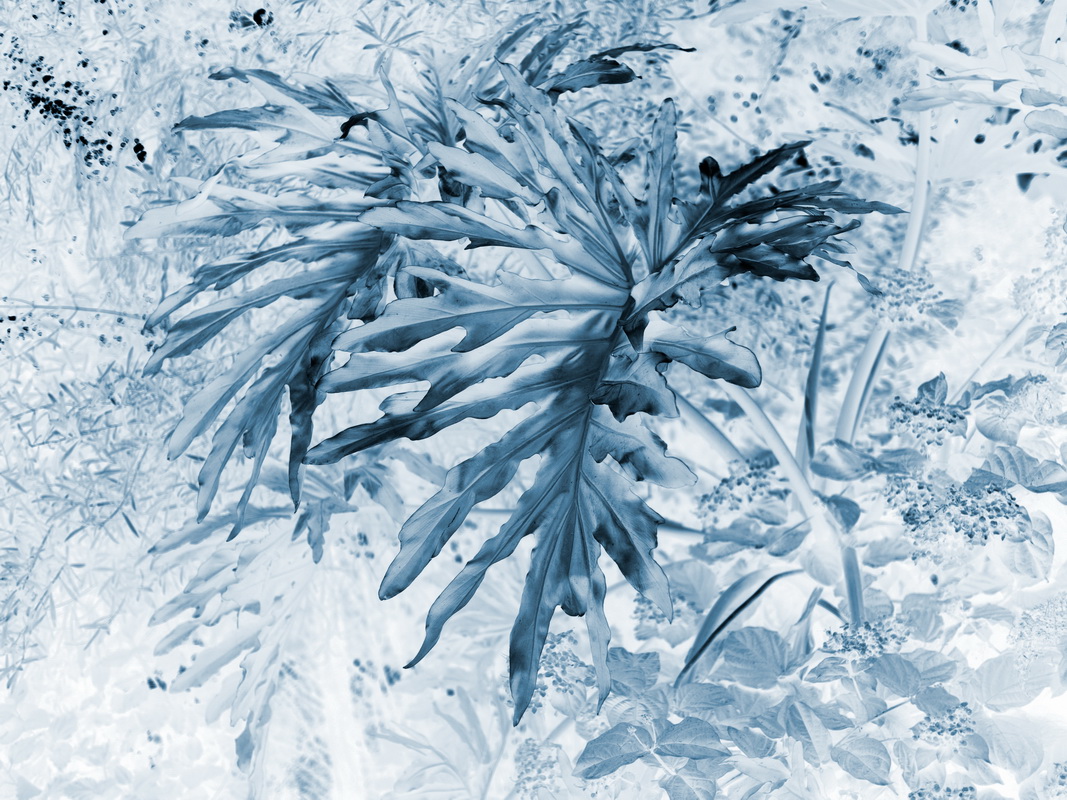









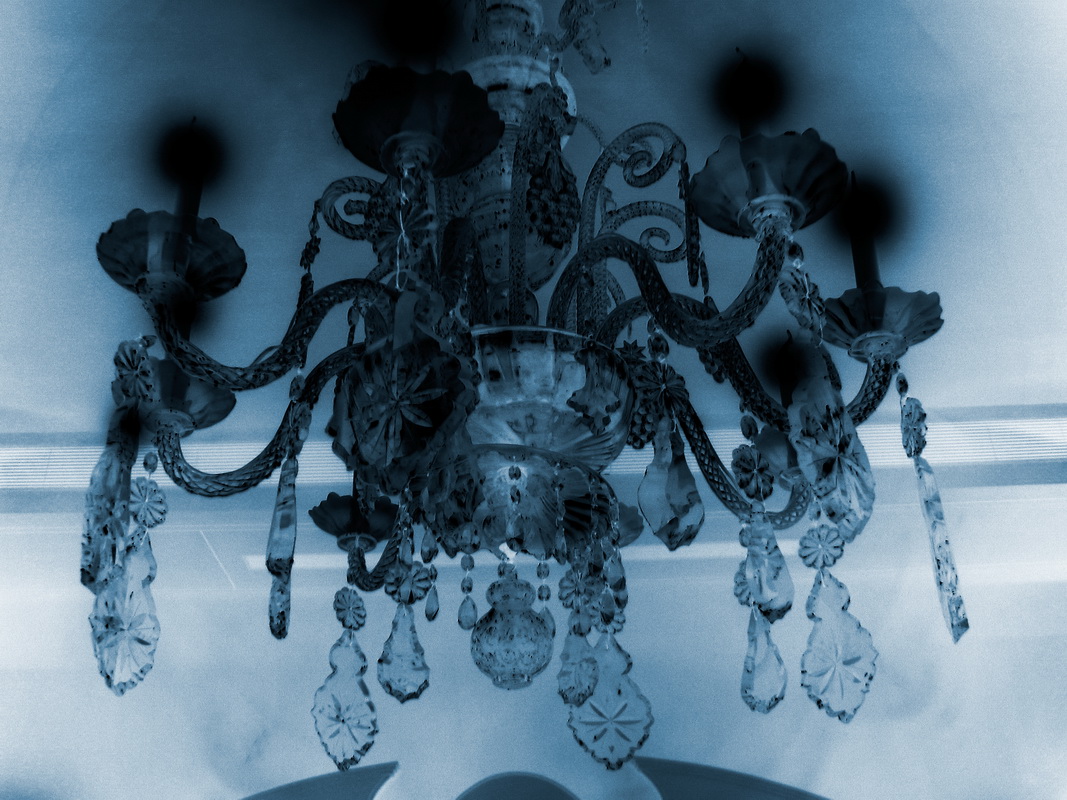



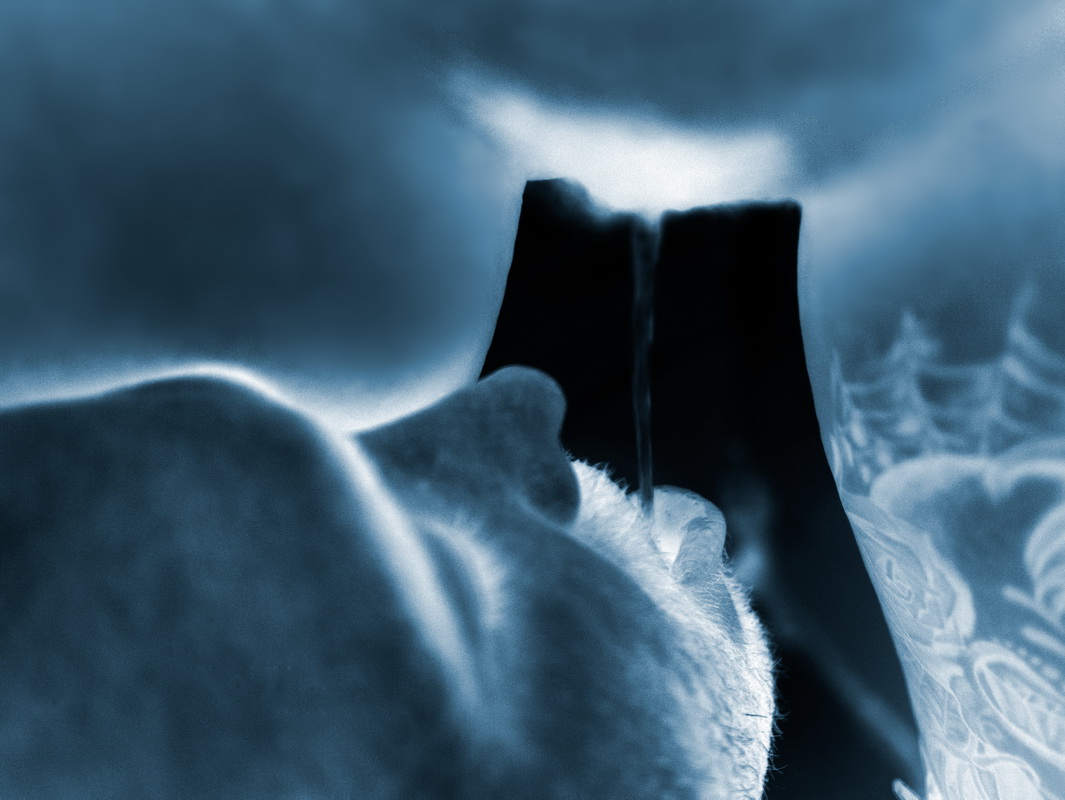





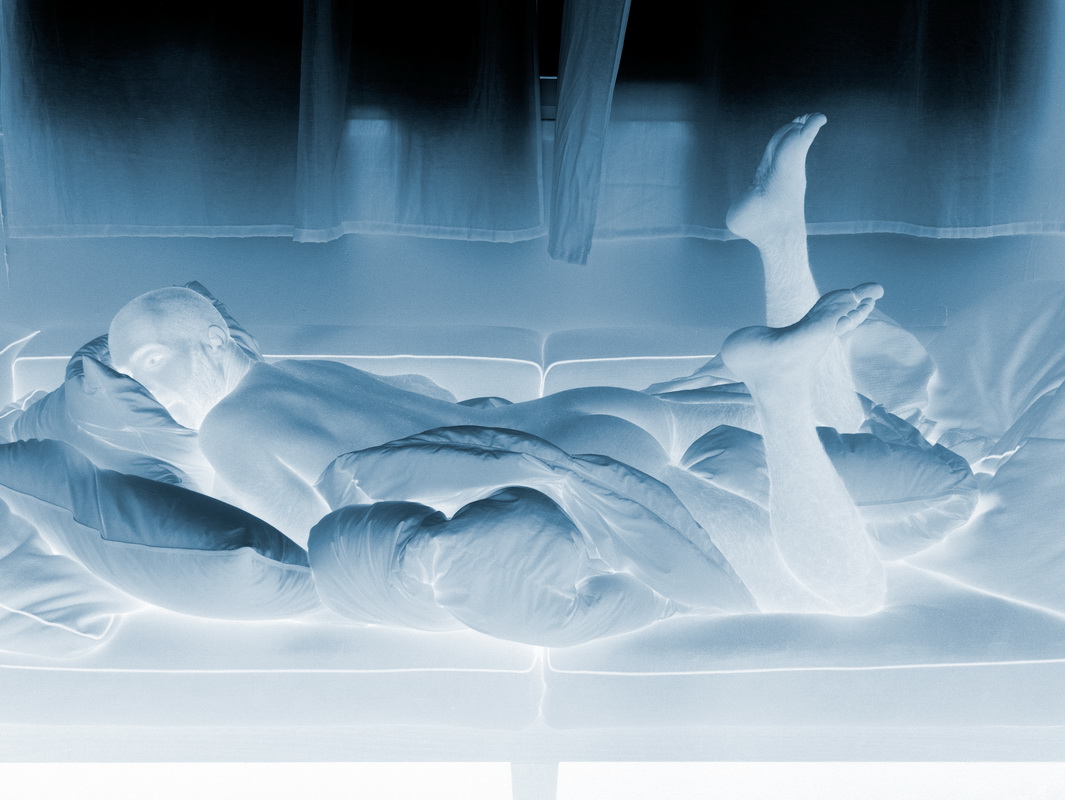



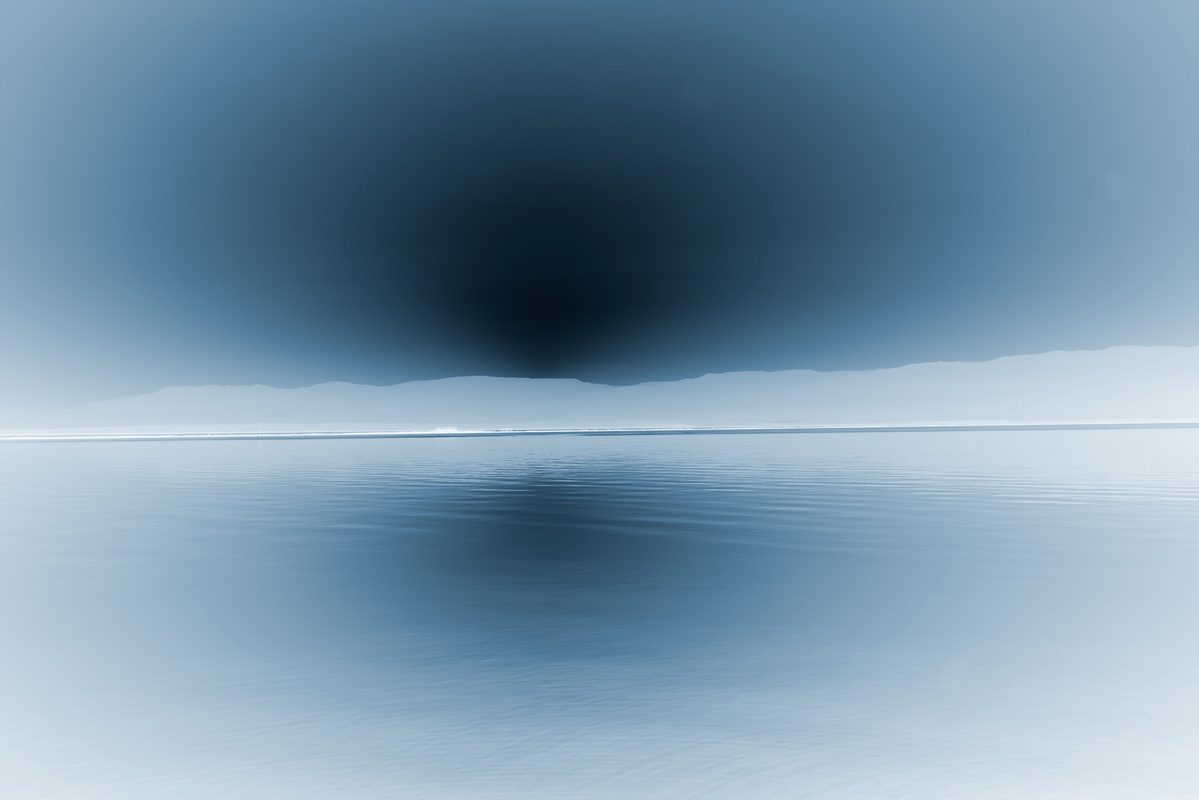

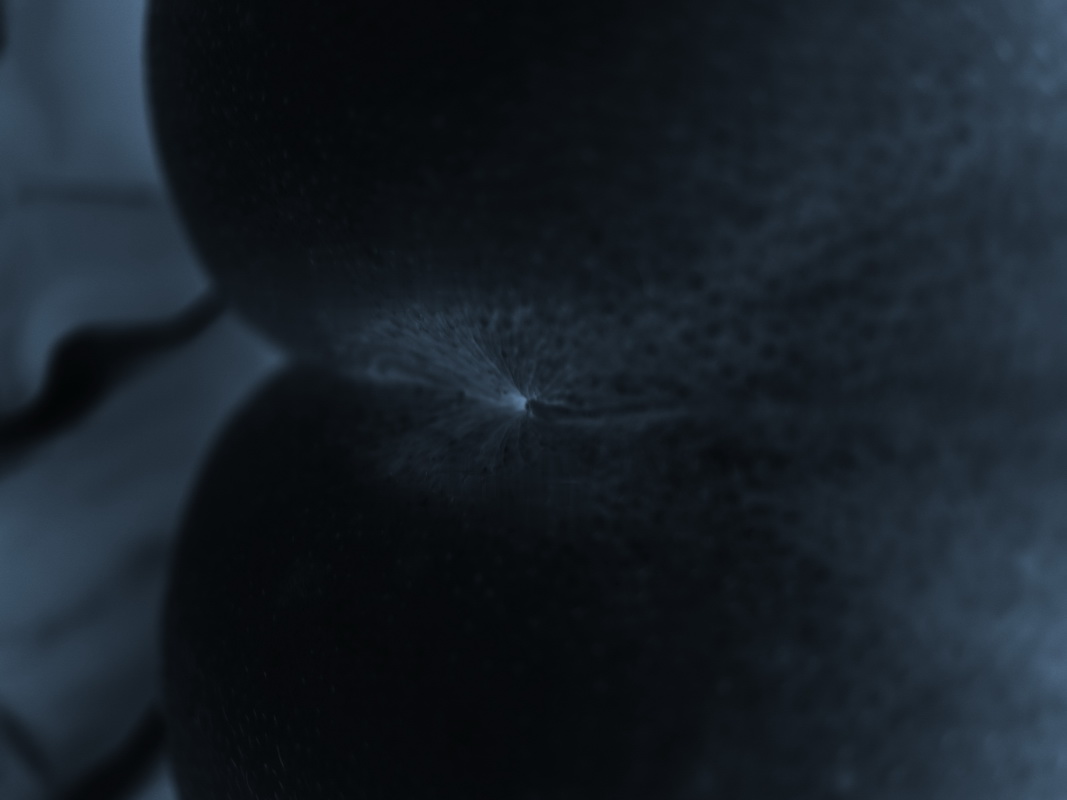

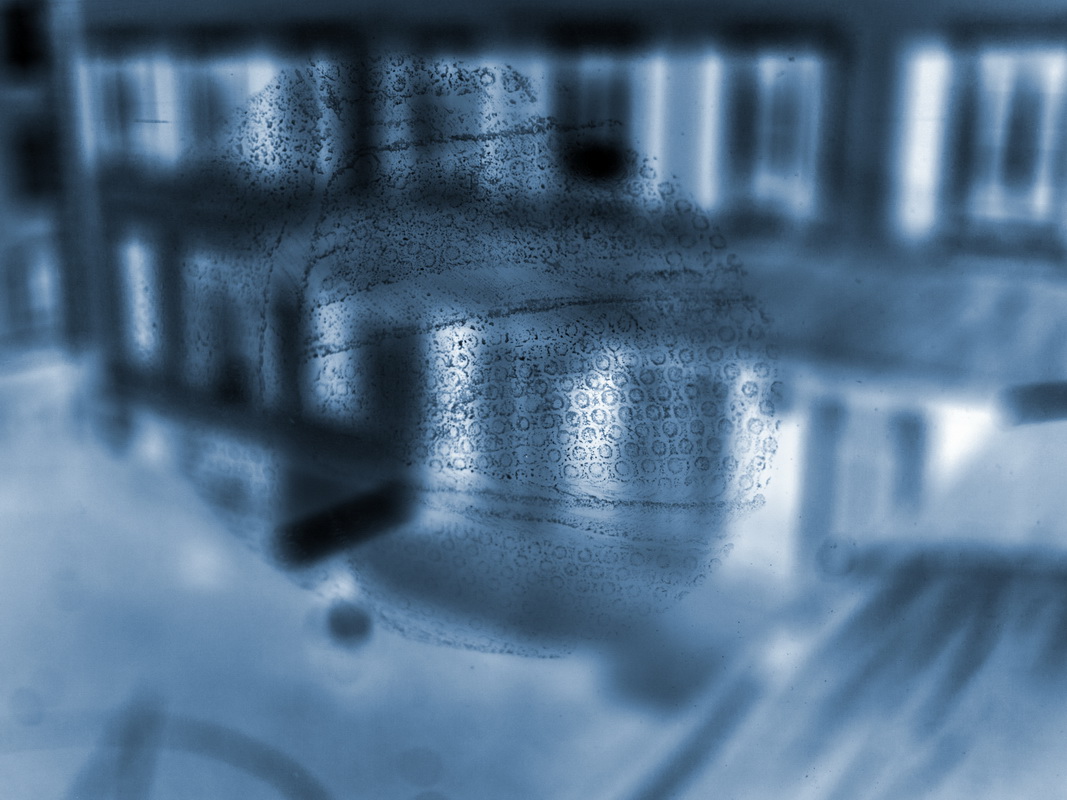

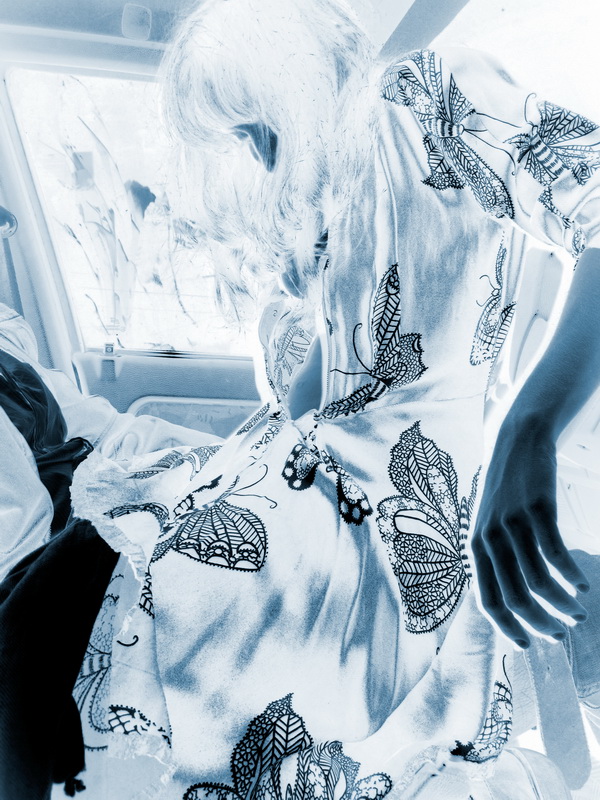

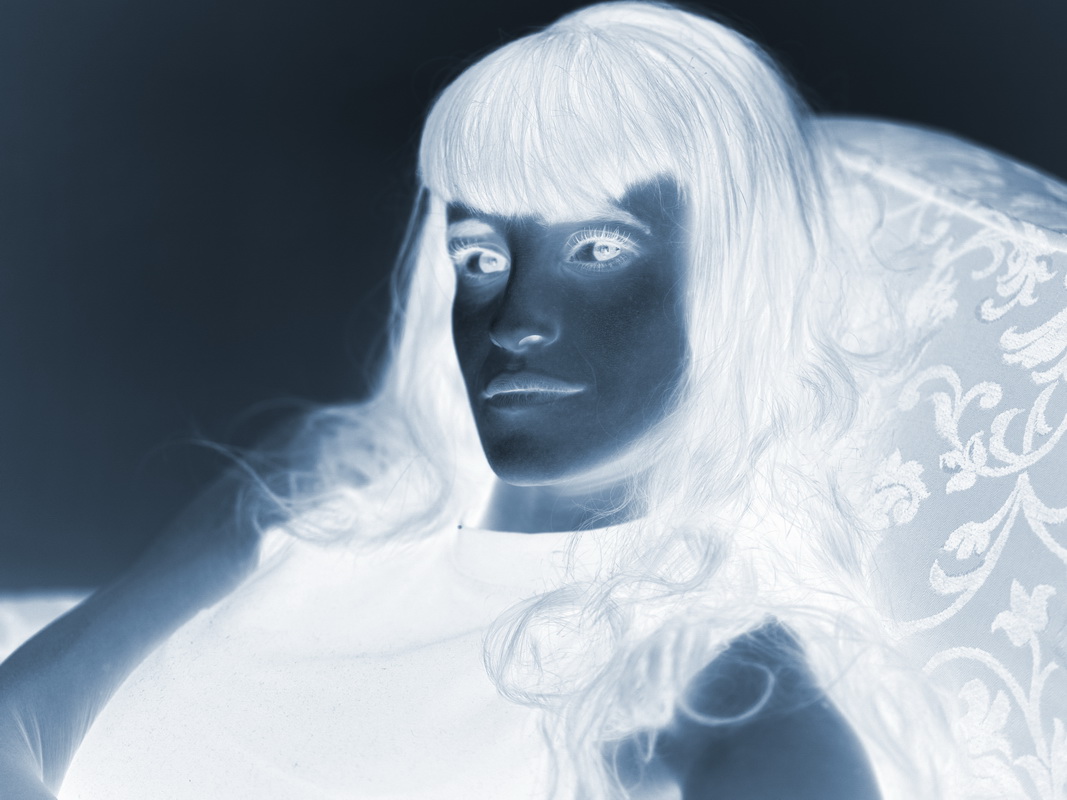



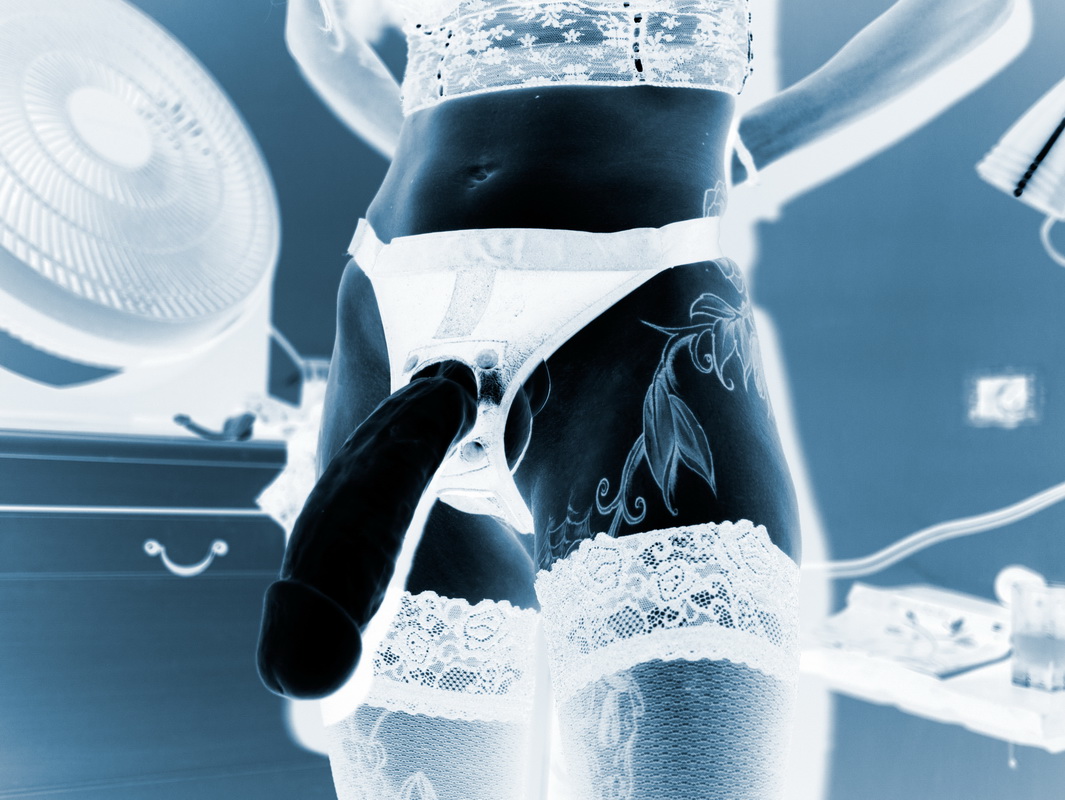









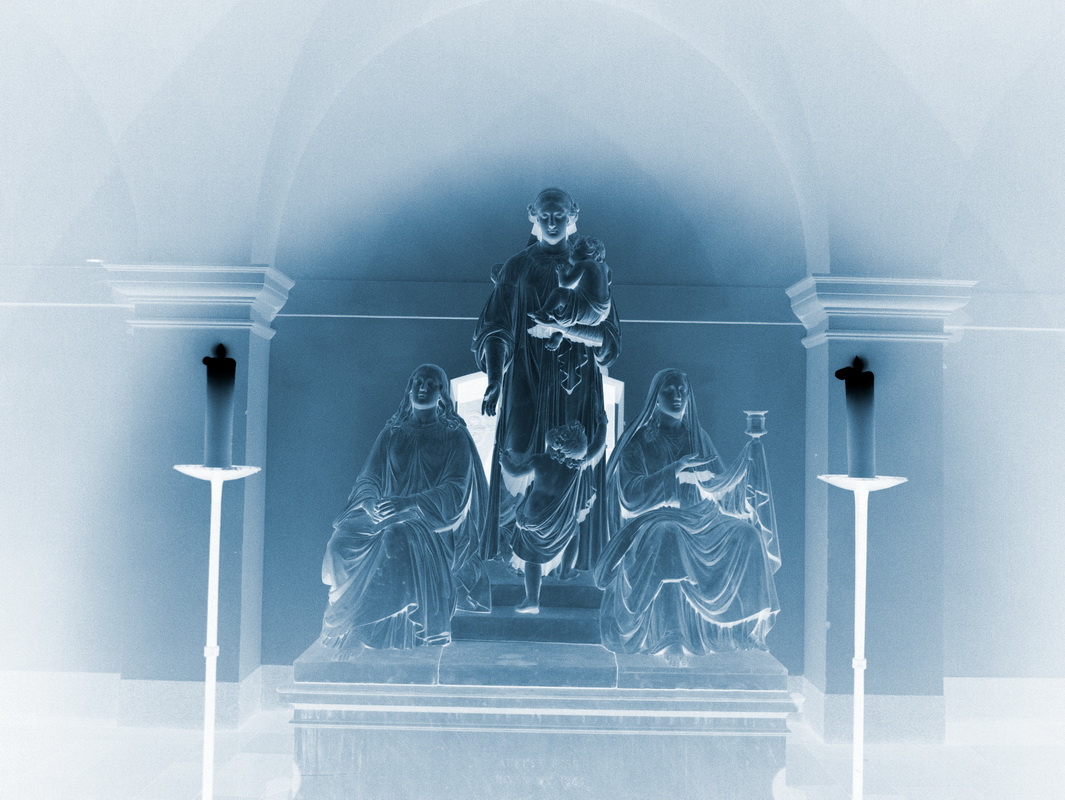

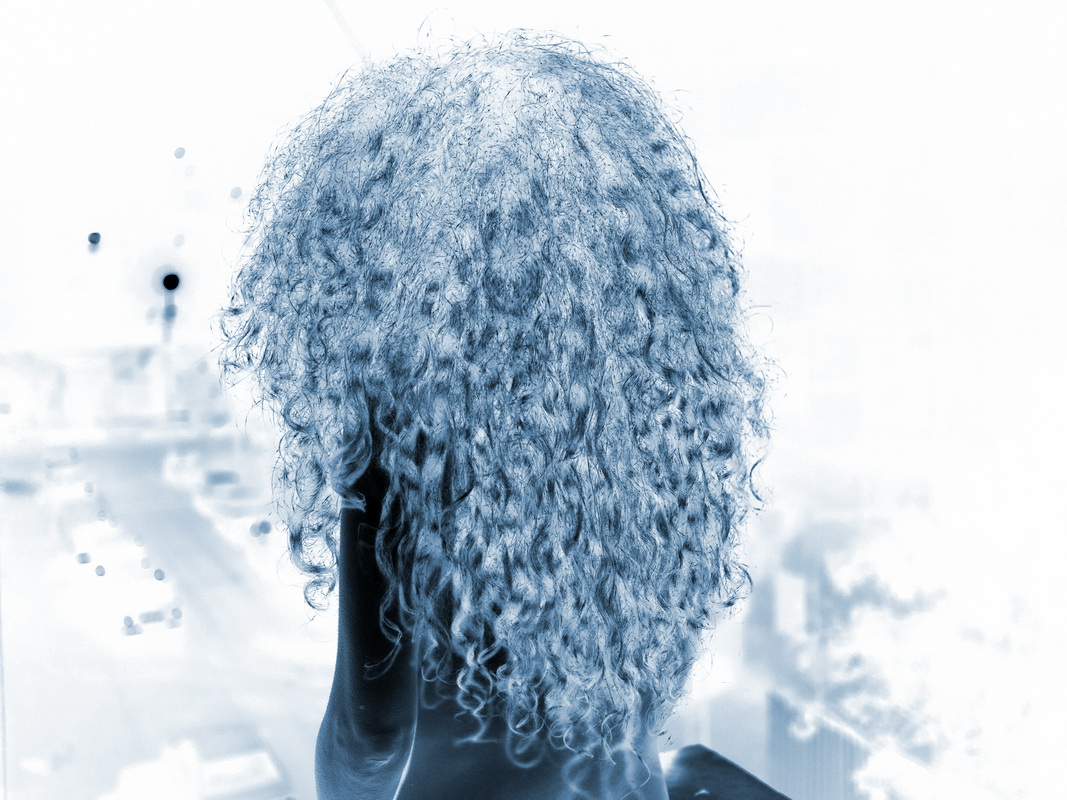

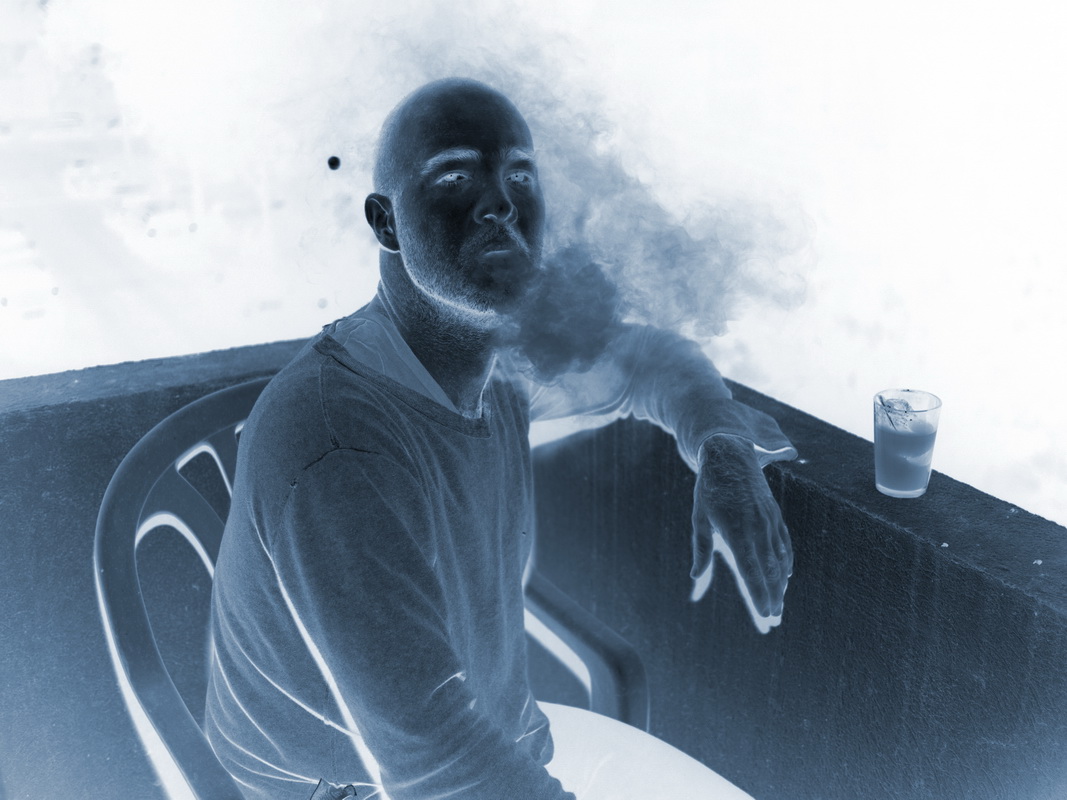

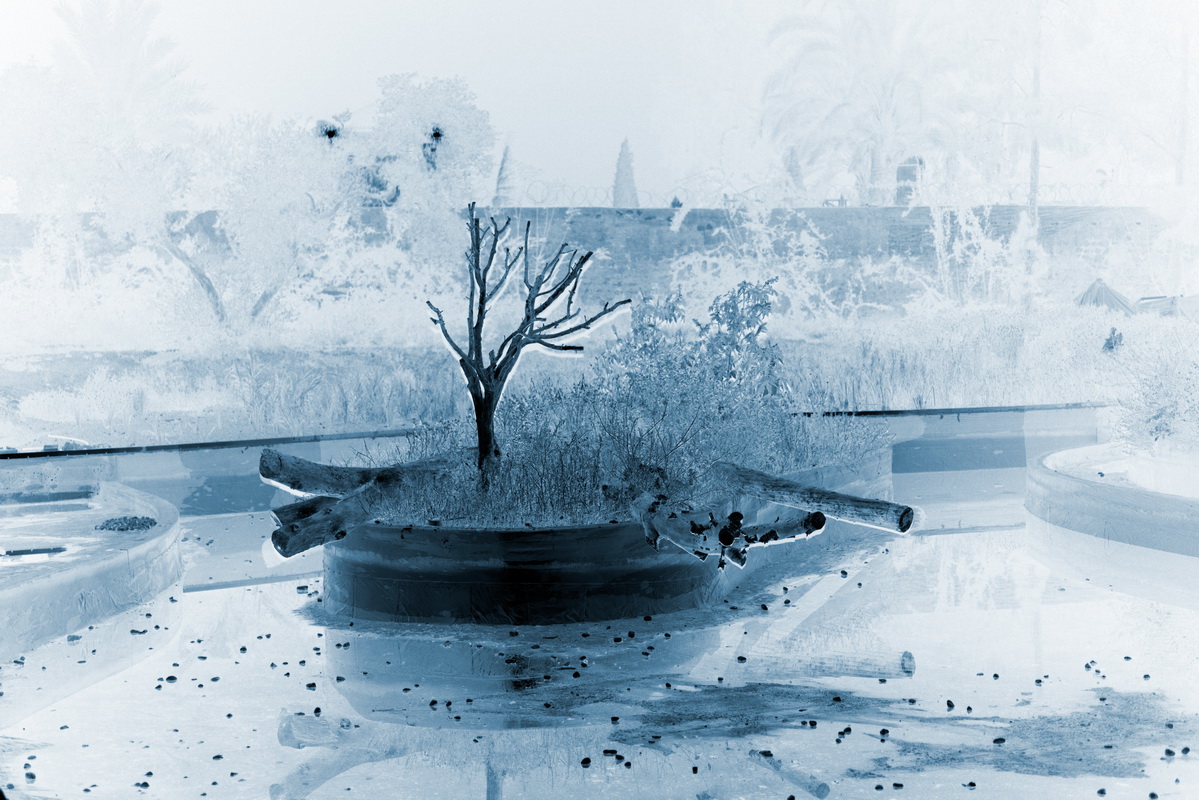

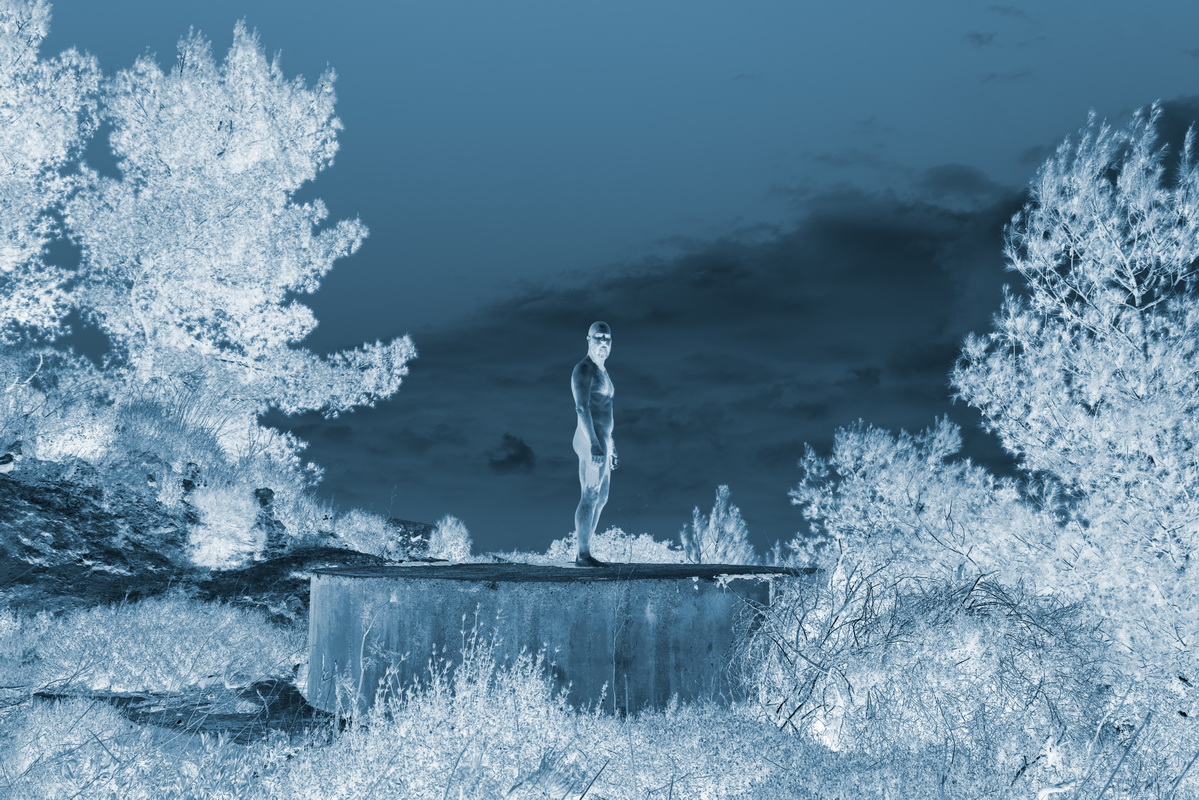





























The profile of the man in the photograph shines against the dark fog that engulfs him. The delicately speckled surface, typical of white marble, suggests that we are looking at a statue – an effect heightened by the stylized curls of his beard, which bring to mind Roman busts. Making our way downwards from the eyes that gaze towards eternity, we come across a lollipop stuck between the figures lips, breathing a different kind of pleasure into the frozen portrait, one that exceeds mere aesthetic pleasure.
Within the world of photography and optics that has long won the supremacy of the representation of the world, there is an entire field that wishes to delineate the world with darkness. From x-rays that pierce through the flesh and expose what lies deep beneath the skin to the forensic use of black light to expose body fluids left as a testament to a presence and to events are no longer there. Against the often maligned and attacked status of photography, these manage to maintain their unshakeable credibility. Perhaps because they show the world through a mechanism that does not purport to emulate human vision, they are perceived as being above illusions and deceptions – irrefutable proofs of a truth that will forever elude the naked eye. To this group of technologies, we can also add the photographic negative – the initial mark of the image as it is captured and recorded with light on film, free of suspicion of manipulation, processing, or retouching.
In Ady Shimony’s new series of works, Black Light, portraits, intimate interiors, erotic, quotidian, and prosaic scenes alongside church statues and monuments, house plants and spectacular landscapes appear in a negative reversal in which the dark areas of the photographed image become the lightest areas. However, here the negative is not a remnant of an early stage (in the photographic process or in the history of photography) but rather the product of digital processing.
This reversal conjures up a parallel universe in which states of matter and qualities change and alternate. A cloud of smoke curling from a cigarette turns into body fluid, natural patterns and prints invade the territory of the body or alternatively break free from it as independent entities. In this fluid world, the tables are turned and desires come to the fore, leaving their traces on the photographic paper. The light that allows the images to form is replaced by darkness, in which we catch glimpses of a playful and sensual reality woven into daily life, opening passages to different dimensions. The nude figure of the artist merges with the cloudy sky like a mythological water god at the top of a waterfall that turns out to be an abandoned concrete structure. A car in the park becomes a “scene” (it is impossible to tell whether a sex or a crime scene). The two poles along which the series moves converge in a photo of a stack of dirty cups, which one moment looks like it is covered in mucous fluid and the next like the mists of a Chinese painting, in which an entire world materializes from the veils of darkness and light. And so, each image in fact holds a duality: the original photographed image, which our mind cannot help but try to reconstruct, and the specter that was printed and exhibited, simultaneously revealing and concealing, exposing and playing tricks.
Maya Shimony